Table of Contents
Flow is an optimal state of consciousness. The flow state is also known as being “in the zone”. It’s where you perform your best. And you feel your best.
We’ve all experienced flow at some time in our life. Recall a time where you were totally absorbed in something. It had your total attention. You were so focused that everything else disappeared.
Your sense of self vanished. Self-consciousness didn’t exit. Time dilated. A 5-hour experience felt like 5 minutes. But the opposite is also true. Time can slow down. So it feels like things are happening in slow motion.
But however you experienced this flow state, your physical and mental performance were off the charts.
A McKinsey & Co. report studied 5,000 executives during workshops. And concluded that senior executives in flow are 5-times better and more productive than those that aren’t.[i]
With a little knowledge and some practice, you’ll recognize a flow state coming on. And with your brain chemistry and brain waves optimized with the right nootropics, you’ll experience flow like never before.
This article is all about hacking your flow state. What recent research shows is happening to you during flow. And the variables you can influence to go into the zone more often.
Definition of the Flow State
The term we now call “Flow” was originally penned by professor and researcher Mihály Csíkszentmihályi in his book “Flow: The Psychology of Optimal Experience”.[ii]
Csíkszentmihályi hypothesized that people are happiest when they are in a state of flow. A state in which you are so involved in an activity that nothing else matters.
In an interview Csíkszentmihályi did with Wired magazine in 1996, he described flow as:
“being completely involved in an activity for its own sake. The ego falls away. Time flies. Every action, movement, and thought follows inevitably from the previous one, like playing jazz. Your whole being is involved, and you’re using your skills to the utmost.”[iii]
This state we now call “flow” has fascinated across cultures. And throughout written history.
Buddhism and Taoism refer to flow as the “action of inaction”, or “doing without doing”. Ancient Advaita texts including the Bhagavad-Gita also refer to a state which we now call “flow”.
Steven Kotler, author of “The Rise of Superman”[iv] and cofounder of the Flow Genome Project writes that athletes in action and adventure sports consistently enter the flow state. Because their activity frequently puts them in life or death situations. It’s “flow or die”.
The Neurobiology of the Flow State
When you enter a flow state, three changes in your neurobiology have been identified:
- Neuroanatomy – Your prefrontal cortex shuts down. This is known as “Transient Hypofrontality”. Your prefrontal cortex is the part of your brain that hosts your higher cognitive functions, sense of morality, sense of will, and your sense of self. Going into flow is like someone hitting the ‘Pause’ button on this section of your brain.
David Eagleman, director of Baylor College of Medicine’s Laboratory for Perception and Action, found that when your prefrontal cortex goes on hiatus, perception of time changes.[v]
Aaron Dietrich of the American University of Beirut found that Transient Hypofrontality is associated with every altered state of consciousness. Dietrich conducted a lot of research on flow state during exercise-induced states of consciousness.[vi]
It’s why you feel a “runner’s high”. Your inner critic is turned to ‘off’. You have no sense of being ‘self-conscious’.
Charles Limb of John Hopkins conducted a study with 11 jazz musicians aged 25 – 56 using a fMRI machine. And found that during jazz improvisation, their prefrontal cortex shut down.[vii]
- Neurotransmitters – Once you experience a flow state, the feeling and memory are so profound, it stays with you. And you want more of what you just had. The flow state experience is profound largely because of the neurotransmitters involved.
Flow begins with suffering and anxiety. And your inner critic is in high gear. The early stage of flow starts with a spike in the neurotransmitter norepinephrine, and the hormone cortisol.
Either you become exhausted, or if you’re wise enough to notice this state – you surrender and relax. Nitric oxide increases, and flushes the stress chemicals out of your blood stream.
Once you enter the flow state, dopamine kicks in. It feels like you want more of this. And you should keep on doing it. Endorphins increase and you feel no pain.
The neurotransmitter anandamide increases which primarily affects cannabinoid receptors. Anandamide (from the Sanskrit word for ‘bliss’) affects your feelings of motivation and pleasure.[viii]
And finally you enter the memory consolidation stage with raises in the neurotransmitter serotonin.
- Brain Waves – Research using EEG and fMRI in the last 5 years have identified the brain waves involved in the flow state.
When you approach a flow state, the spike in norepinephrine and cortisol is accompanied by busy, hyperactive Beta brain waves. When you get too tired or frustrated. Or if you’re wise enough and simply relax. Nitric oxide kicks in along with relaxed but alert Alpha brain waves.
Once you enter the flow state, along with dopamine, endorphins and anandamide, you experience Theta brain waves. Theta brain waves are the states experienced by long-time meditators. This is the state of optimum feeling and heightened performance. We rarely go into Theta during a regular waking state of consciousness.
As you leave the flow state, you go into deep Delta brain waves. This is the stage of memory consolidation along with a boost in serotonin. You get the afterglow of immense satisfaction. And the good feelings of serotonin.
Flow State is not an Ability or Skill
Now that we understand what happens leading up to, during, and after a flow state. It’s tempting to think we can use this as a ‘prescription’ to achieve flow. But flow isn’t as easy as learning a simple recipe.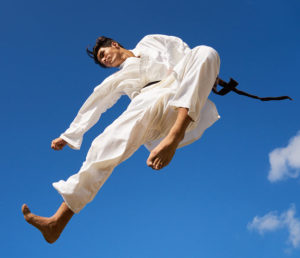
Being a long-time meditator, I’m going to take some liberties here. And go a little deep on you.
Flow is the underlying state at which you naturally exist. Ask any long-term student of meditation. While you normally can’t achieve the flow state at will. You can re-create flow through practice. Especially the practice of letting go.[ix]
You see this all the time with athletes participating in extreme sports. You see it in musicians during an extended and inspired jam session.
As a copywriter, I experience flow almost every day. Writing a piece like this requires intense research. And flooding my brain and system to overwhelm. Until the flood gates burst. And I start to write. This is flow.
So practice and repetition may help you develop the ability to experience flow on demand. Visualization can be part of the ‘repetition’ process.
How to Recognize a Flow State
When you are under extreme pressure. And you lose focus. You simply don’t know what to do. Panic can begin to set in. And it feels like you really don’t want to go there …
This is often the beginning stage of the flow state. It can be hellish. Or if you recognize it for what it is. You can catch the wave. And ride it through.
Earlier, we discussed nearly all the major neurotransmitters involved in various stages of flow. And the brain waves involved in each.
Well, it turns out you can have a much deeper, more pleasant, memorable flow experience when neurotransmitters and brain waves are optimized. My life and work is an example of how flow can be hacked.
But nootropics alone can’t produce a flow state. It’s a full body experience. Nootropics however can help achieve and provide a better, fuller, richer flow experience.
Next, we’ll look at some nootropics that can help in each stage of a flow state. Both optimizing neurotransmitters and brain waves.
Best Nootropics for Hacking Your Flow State
While nootropics will not induce a flow state. The right supplements can certainly provide a more pleasant, powerful experience.
The neurotransmitters involved in flow include norepinephrine, dopamine, endorphins, anandamide, and serotonin. Nitric oxide is needed to help flush out the stress chemicals that allow you to go into flow. And brain waves involved in flow include Beta, Alpha, Theta and Delta waves.
Each of these neurotransmitters and brain wave patterns can be influenced by the right nootropic. And we have a lot of nootropics to choose from. So this next section are suggestions for assisting each stage of flow.
There are many more options for optimizing neurotransmitters and brain waves than what I include below. This is not a definitive list. But my intention is to get you started.
Experiment and see what works best for you.
Dopamine & Norepinephrine
The production of dopamine in your body follows this metabolic pathway:
Phenylalanine → Tyrosine → L-DOPA → Dopamine → Norepinephrine
Dopamine is converted to norepinephrine by the enzyme dopamine β-monooxygenase, with O2 and ascorbic acid (Vitamin C) as cofactors.
If dopamine levels are low, norepinephrine levels will be low as well. And you won’t go into flow.
Nootropics to boost dopamine
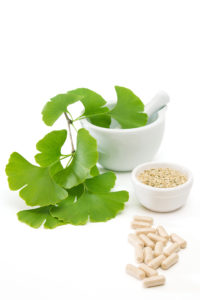 Ginkgo Biloba – Ginkgo acts as a monoamine oxidase inhibitor (MAOI) which reduces levels of monoamine oxidase (MAO) in the brain. MAO breaks down dopamine.[x] Particularly as you get older. And Ginkgo is very effective in boosting cerebral circulation. Providing your brain the nutrients and neurotransmitters it needs during flow.
Ginkgo Biloba – Ginkgo acts as a monoamine oxidase inhibitor (MAOI) which reduces levels of monoamine oxidase (MAO) in the brain. MAO breaks down dopamine.[x] Particularly as you get older. And Ginkgo is very effective in boosting cerebral circulation. Providing your brain the nutrients and neurotransmitters it needs during flow.- L-Tyrosine is the precursor to producing dopamine in your brain. Tyrosine enhances working memory, executive function, creative flow states, reduces stress, improves mood and is anti-anxiety. Suggested dosage of L-Tyrosine is 350- 500 mg twice per day.
- Mucuna Pruriens (L-Dopa) – Mucuna works as an antioxidant and heavy metal chelator, improves memory and cognition, reduces depression and boosts libido. L-Dopa is also the precursor to dopamine. Suggested dosage of Mucuna Pruriens is 250 – 500 mg per day.
- N-Acetyl L-Cysteine (NAC) – NAC is an amino acid that regulates the amount of glutamate and dopamine in your brain. And NAC protects your dopamine receptors. Influencing dopamine levels and function in your brain.
- NADH – NADH is the active coenzyme form of Vitamin B3 (niacin) present in every cell in your body. NADH helps stimulate the production of dopamine, norepinephrine and serotonin.[xi] All neurotransmitters involved in flow.
- Vitamin B6 and B12 – Both vitamins B6 and B12 are a prerequisite to achieve a flow state. This is NOT optional. Both are required for the synthesis of neurotransmitters dopamine, norepinephrine and serotonin. B12 even helps increase serotonin and dopamine levels in your brain. And even mild deficiency in B6 results in down-regulation of GABA and serotonin. Without it you will not experience the afterglow of an amazing flow state.
Nitric Oxide
Nitric oxide is required to flush the high levels of norepinephrine and cortisol produced to ensure a smooth transition into the flow state.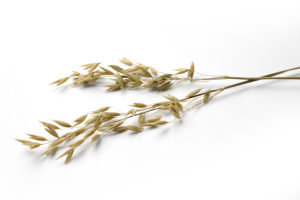
- Oat Straw – Oat Straw is an MAO-B inhibitor which increases dopamine levels in your brain. Oat Straw can improve attention, focus, cognition and concentration. And it helps boost nitric oxide and inhibits the enzyme PDE4 which helps dilate blood vessels.[xii] Flushing out your system to prepare you for a full flow experience.
- NADH – NADH does double duty during the flow state. Not only does it boost dopamine, norepinephrine and serotonin. It also helps boost the production of nitric oxide to help flush out the stress chemicals so you can go into flow.
- Pramiracetam – This nootropic from the racetam-family has a profound effect on the synthesis of acetylcholine in your brain. Helping all the other neurotransmitters function better. But Pramiracetam also increases nitric oxide activity in your brain.[xiii]
- Vitamin B3 (niacin) – Niacin does double-duty by helping to stimulate the production of dopamine, norepinephrine and serotonin. Critical neurotransmitters involved in the flow state. And niacin boosts the production of nitric oxide. Helping to flush out the stress chemicals necessary to ensure you enter flow.
Endorphins
- Phenibut – This nootropic is an analogue of GABA which stimulates your pituitary gland to secrete Human Growth Hormone. And helps produce endorphins that make you feel good during and after a flow state.
- Picamilon – Is used to boost GABA in your brain and produce alpha brain waves. Picamilon also helps produce the endorphins that make you feel good during and after a flow state.
- Rhodiola Rosea – Rhodiola is nearly mandatory for a mind-blowing flow state. This adaptogen not only boosts serotonin and norepinephrine levels contributing to good mood. But it also increases the feel-good opioids like beta-endorphins.
Serotonin
- Ginseng – Ginseng does double-duty during the flow state. This adaptogen provides neuro-protection on the dopaminergic-pathway. And is also a potent serotonin reuptake inhibitor (SSRI).[xiv] Working as an antidepressant and contributing to a great conclusion to flow.
- L-Theanine – Commonly found in green tea, L-Theanine helps boost GABA, serotonin and dopamine in your brain.
- Rhodiola Rosea – Rhodiola helps improve alertness, energy, memory and mood, is anti-anxiety and anti-depressant, reduces fatigue and boosts cognition and concentration. Rhodiola influences serotonin and norepinephrine levels in your brain. Suggested dosage of Rhodiola extract is 150 – 200 mg per day.
- Vitamins B6, B8 and B9 are all needed to help the synthesis of serotonin in your brain.
Brain Waves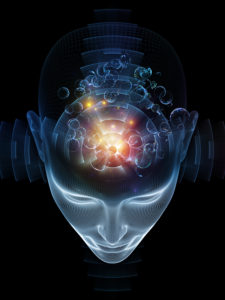
- L-Theanine – L-Theanine boosts alpha brain waves (8-12Hz) promoting alert relaxation.[xv] And theta brain waves associated with creativity and relief from trauma.
- Phenibut – This analogue of the inhibitory neurotransmitter GABA easily crosses the blood-brain barrier. Phenibut helps relieve anxiety, stress and boosts the production of alpha brain waves.[xvi]
- Picamilon – Picamilon is a combination of the neurotransmitter GABA and Vitamin B3 (niacin). GABA on its own cannot cross the blood-brain barrier. But Picamilon does cross into the brain with the help of niacin. Picamilon has been shown in clinical studies to boost the production of alpha brain waves.[xvii]
- Noopept – This potent nootropic modulates AMPA and NDMA receptors in your brain. Modulates levels of glutamate within neurons and protecting brain cells. Influences Long-Term Potentiation needed to develop long-term memory. And boosts Alpha and Beta brain wave activity.
- Phenylpiracetam – This nootropic has been banned by the World Anti-Doping Agency preventing athletes from using it in competition because of its stimulatory effects. But Phenylpiracetam has also been shown in clinical studies to affect Alpha and Beta brain waves.[xviii]
Flow is the Ultimate State of Consciousness
Flow is the ultimate state of consciousness where you feel and perform your best. And nootropics can certainly assist in getting to, maintaining, and coming out of an amazing flow experience.
One final note on all the nootropic supplements suggested above. You may have noticed that the B-Vitamins are involved in synthesizing and producing all major neurotransmitters.
Every nootropic stack should include a high quality B-Complex formula that includes highly bioavailable Vitamin B9 (folate not folic acid) and B12 (methylcobalamin not cobalamin).
For dosage recommendations, side effects and drug interactions, click on the link to each nootropic to see the full article on that supplement.
When you’re in flow, your productivity and creativity go through the roof. Steven Kotler, author of The Rise of Superman found that being in flow (or the Zone), can increase productivity by 500 – 700%.
Think about that for a minute. One day in flow can produce as much as what would normally take you a full week to do. And nootropics can help.
If you’ve experienced the flow state and have any suggestions that could help the rest of us neurohackers. I’d appreciate your comments below.

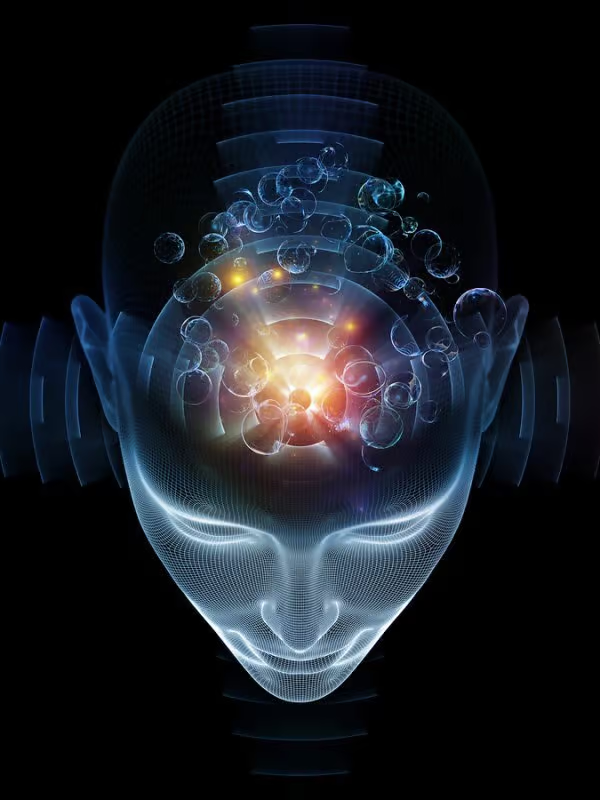
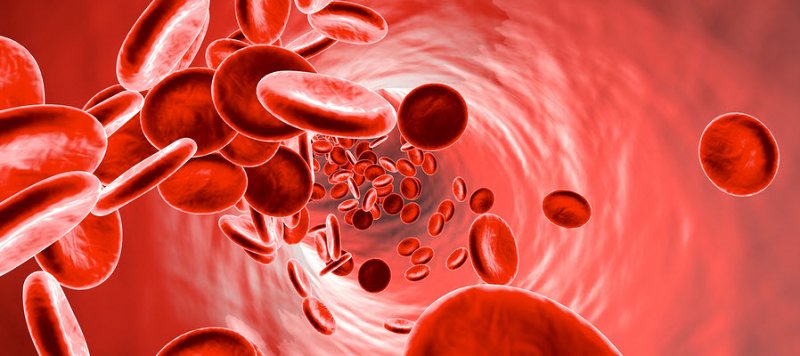






Join The Discussion - 32 comments
Nina
November 5, 2025
A truly inspiring text. Dear David, do you think that L-Arginine would help with boosts the production of nitric oxide and how many mg of L-Argine daily?
Thank you
David Tomen
November 5, 2025
Nina, L-Arginine absolutely boosts the production of nitric oxide. A good starting dose is about 5 grams per day.
Jacob
September 24, 2025
Good afternoon (from aus) David,
I’m considering a nootropic stack for my attention. I’m not self-nor-professionally diagnosed with any attention deficit disorder though I believe I may have some environmentally engrained neural pathways which prevents me from reaching a state of flow or focus regularly.
The current stack I am considering is such;
CDP-Choline 300 mg – twice per day, ALCAR – 500 mg twice per day, and L-Tyrosine – 500 mg 3-times per day, BioActive multivitamin, elemental magnesium (300mg), Vitamin D3 5,000 IU per day.” and 15 minutes silent meditation per day.
This is clearly inspired from blogs I’ve read here but I just wanted your personal opinion on this specifically.
Additionally would you recommend 1000/2000mg of Omega-3s (EPA/DHA).
Warm regards,
Jacob
David Tomen
September 25, 2025
Jacob, I don’t do stack reviews here in the comments section. Because otherwise, if I did, I would be doing hundreds and nothing else would get done. But base on the supplements you posted in your comment, your best option is the stack in the box near the top of the ADHD article. Because that will provide the benefits you’re looking for. As for Omega-3s, your brain needs 1,000 mg DHA every day.
Jacob
September 25, 2025
What do you think of this video of Dr Eric Berg stating that taking Niacinamide 6-8x per day can help ADHD
David Tomen
October 4, 2025
Jacob, niacin does stimulate the production of dopamine, norepinephrine and serotonin. Which can certainly help with ADHD. But there is no one-pill solution for treating ADHD when it comes to supplements.
Pavlos Stephanides
September 12, 2025
Hi David, since you considered in the dopamine section as a mandatory prerequisite the tyrosine, shouldn’t be as a serotonin precursor with the same ideology the tryptophan? My concern is in fact, without tryptophan, Serotonin cannot be produced properly?
David Tomen
September 12, 2025
Pavlos, dopamine and serotonin must be in balance. So if you are increasing dopamine during the day with L-Tyrosine then you should use L-Tryptophan to increase serotonin. And that is best to use before bed because serotonin goes on to produce melatonin.
Lucas Still
June 12, 2025
Inventory: Alpha GPC, Alpha Lopioc Acid, Bacopa Monnieri, CDP Choline, Ethyl Ascorbic Acid, Huperzine A, L-Theanine, Methylene Blue, Mucuna Pruriens (99.6% L-DOPA), NAC, NALT ALCAR, Noopept, Piracetam, Pramiracetam, Phenylpiracetam, Nefiracetam, Retinyl Palmitate, Rhodiola Rosea (3% salidrosides) Selank, Semax, Vinpocetine, Centrophenoxine. I run a base every day (not everything) and modify it specifically based on my body’s response. I run minimal system redundancies and never push more than one system per day. I run replenishment stacks and preventative stacks to prevent peripheral symptoms and crash. I document emotional and physical symptoms. I have had astounding results. I don’t know anybody personally who takes nootropics and when I tell people what I am doing, they think it is insane. I need a venue to publish my stacks and results. I’m self studied and all of my stacks are my own.
David Tomen
June 14, 2025
Lucas, then I suggest you start a website and start publishing what you’ve learned just like I did when I started Nootropics Expert in January 2016.
John
August 23, 2024
Hello David, Are there any other supplmenets besides the ones you listed (I have tried oat straw and NADH to no avail and I use a high quality B vitamin complex with niacin) that boost the nitricoxide to flush out high levels of norepinephrine and cortisol? I believe this is hindering my ability to stay in a calm flow and use working memory effectively. Thank you.
David Tomen
August 23, 2024
John, you are likely already taking care of norepinephrine but I suggest adding L-Theanine 150 mg 3-times per day with 300 mg Phosphatidylserine per day to suppress cortisol.
John
August 24, 2024
Thank you David.
John
May 24, 2025
Hello David,
I wanted to follow up. I had no success with L-Theanine which just caused drowsiness and mental fog. And I could not feel anything from Phosphatidylserine. However, pomegranate, beet root and other NO boosting supplements appear to help the most. I seem to easily build up norepinephrine which it feels like adrenaline, and which is an obstacle to my ability to focus and sustain concentration for long periods of time. It is not perfect but manageable, so I am still researching better alternatives.
David Tomen
May 25, 2025
John, you’ll have more success with Phosphatidylserine if you use it with 1,000 mg DHA.
Have you done a search up top for “nitric oxide”? I haven’t reviewed them but L-Citrulline 1,000 mg with L-Arginine 5000 mg will definitely boost nitric oxide.